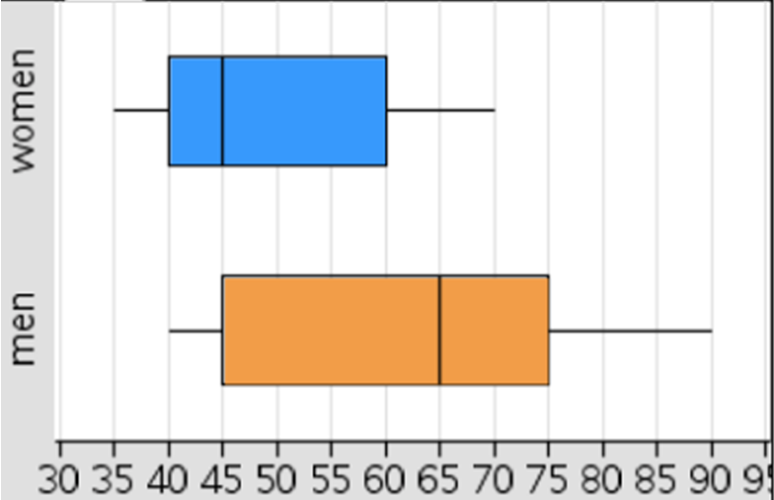Understanding
Measurements collected from the entire population are typically called a census, a complete count of everyone or everything in the population. A sample is a subset of the population, typically selected to represent the population.
What to look for
Students should note that bar graphs convey some information that can be used to compare distributions, but that they are limited as data analysis tools.Sample Assessment
The plot shows the number of points earned in a contest by men and women.
Number of points earned:

What is the least number of points earned in the contest by either men or women?
Answer: 35 points




